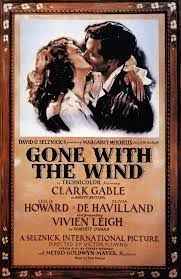
Gone with the Wind Movie Review: A Timeless Epic of Love and Loss
Introduction
When it comes to classic films, few can rival the enduring impact and cultural significance of “Gone with the Wind.”
Released in 1939, this epic historical romance directed by Victor Fleming has stood the test of time and continues to captivate audiences worldwide.
Set against the backdrop of the American Civil War and Reconstruction era, the movie tells the story of Scarlett O’Hara and her tumultuous journey through love, loss, and personal growth.
The Splendor of the Antebellum South
The film opens with a breathtaking portrayal of the antebellum South, depicting the opulent lifestyle of Southern aristocrats.
The grandeur of Tara, the O’Hara family plantation, is a visual marvel that sets the stage for the narrative.
The audience is introduced to Scarlett O’Hara, a headstrong and complex character brilliantly brought to life by Vivien Leigh.
Love and Turmoil in War-Torn Times
As the Civil War erupts, the lives of Scarlett and those around her are forever altered.
The movie masterfully captures the chaos and devastation of war, while simultaneously delving into the intricacies of interpersonal relationships.
The iconic romance between Scarlett and Rhett Butler, portrayed by Clark Gable, is a rollercoaster of passion, conflict, and heartache.
Scarlett O’Hara: A Compelling Protagonist
Scarlett O’Hara’s character arc is a central focus of the film.
Her transformation from a carefree Southern belle to a determined survivor showcases the resilience of the human spirit.
Her flaws and strengths are vividly portrayed, making her one of the most complex and compelling characters in cinematic history.
Cinematic Excellence: Direction and Cinematography
Victor Fleming’s direction and the cinematography by Ernest Haller contribute to the film’s cinematic brilliance.
The sweeping landscapes, meticulously designed sets, and attention to historical detail immerse the audience in the world of the Old South.
The use of Technicolor was revolutionary for its time, enhancing the visual spectacle.
Themes of Resilience and Change
“Gone with the Wind” explores themes that remain relevant to this day.
The movie delves into the themes of resilience, survival, and the inevitability of change.
The characters’ journeys mirror the societal shifts brought about by the war, challenging traditional norms and highlighting the strength required to adapt to new circumstances.
Critique and Controversy
While celebrated for its cinematic achievements, “Gone with the Wind” has also faced criticism for its romanticized portrayal of the South and its depiction of racial dynamics.
The film’s handling of these themes prompts important conversations about historical accuracy and representation in media.
Conclusion
In the pantheon of cinematic history, “Gone with the Wind” holds a significant place.
Its epic storytelling, memorable characters, and visual splendor continue to captivate audiences.
While not without its complexities and controversies, the film remains a testament to the power of storytelling and its ability to transport us to different times and places.
FAQs
1. Is Gone with the Wind based on a true story?
No, the movie is based on a novel of the same name by Margaret Mitchell, which is a work of fiction.
2. Who played the lead roles in the film?
Vivien Leigh portrayed Scarlett O’Hara, and Clark Gable played Rhett Butler.
3. Has the film won any awards?
Yes, “Gone with the Wind” won eight Academy Awards, including Best Picture.
4. How does the film address the Civil War’s impact on society?
The film portrays the Civil War’s profound effect on both individual lives and societal norms, highlighting the struggle for survival and adaptation.
5. Where can I watch Gone with the Wind today?
You can find the movie on various streaming platforms or purchase it through online retailers.
Leave a Reply